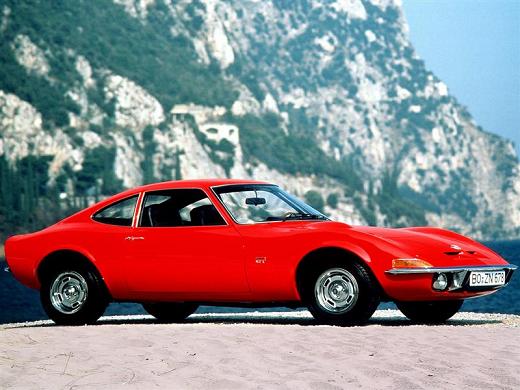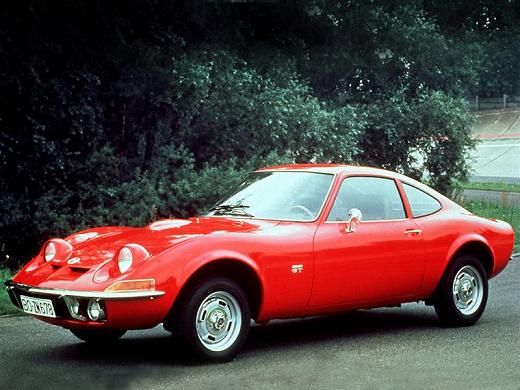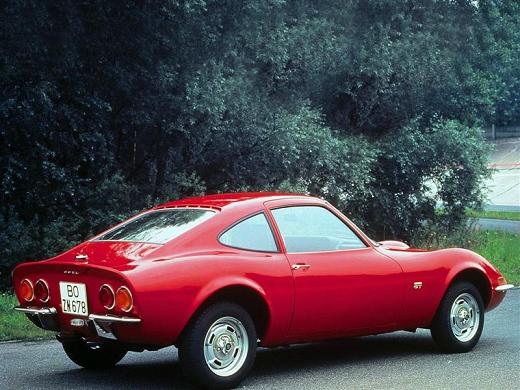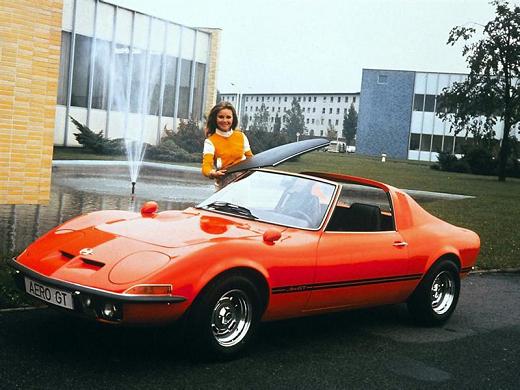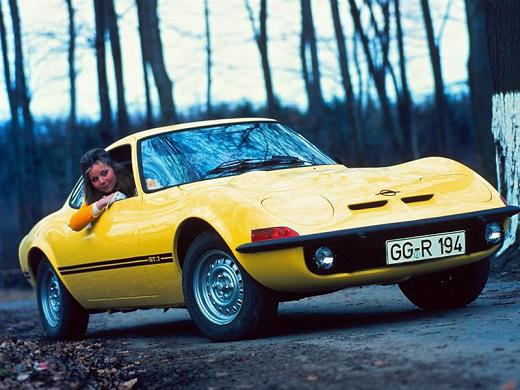Opel GT 1968 - 1973 - Model history
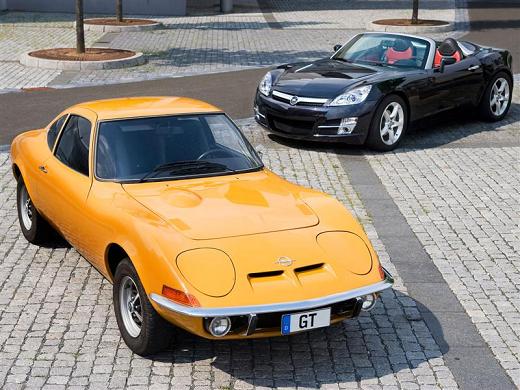
Opel GT
In the late XNUMXs and early XNUMXs, every young man's dream was to drive one day Opel GT.
This statement of one of my friends simply did not sound true to me, until I had a better deal with probably the most interesting model of Opel, which has the status of a classic car. The history of this famous car begins in 1962, when Opel decided to develop a sports car, somewhat more dynamic and aggressive than the models of that time. Since this project was not primary for the company, the development was slow and until 1965 there were no concrete changes.
That year, in America, Chevrolet is a study of the sports coupe, the Monza GT, which forms the basis for both the GT and, in a sense, the famous Corvette. It was a formula that was very popular and modern in those years. Specifically, they buy a body, a long hood and a short tail, hidden headlights and round stop lights in pairs. Opel, as a fairly autonomous European outpost of GM (since 1929), has been given the license to take over the concept and develop it according to its needs. The platform was taken from an existing Kadetta chassis designed and modified to accommodate a short and narrow body.
Engineers have specially prepared the lower unit for this model, closer to the sporting purpose and until the very beginning of production the choice of the engine was unknown. Too little space under the sloping hood restricted the choice of units, so only four-cylinder engines came into play. At the end of 1967, the French bodybuilding company Brissonneau et Lotz further engineered the car, with the world premiere a year later, in September 1968. The public was pleasantly surprised by Opel's new product.
Previous models of this German manufacturer, which could be characterized as quality but also boring, were enriched with an exceptional car. On the other hand, the striking resemblance of this model to the third-generation Corvette Stingray introduced in the same year could not be noticed, but the automotive world had no major objections. In terms of design, the two cars had the same basics, but with a difference in dimensions, in fabrication, and in details that were basically the same, but when found on the vehicle, with a different reflection on the senses.
Such an interesting detail are the headlamps of similar shape, which in the Corvette are classic doubles, retractable, and in the GT, evolving, around its longitudinal axis with one headlamp each. Such a system has never been used before and the Opel GT is the first car to open its headlights like this. A similar thing is with the interior, which is designed according to the same formula, but with a GT with a clearly differentiated continental accent. Under the hood, the difference was the most drastic because the European athlete had twice less cylinders (four) and three to four times smaller engine volume in the start.

Opel GT
Specifically, the proven units of 1,100 and 1,900 cubic meters, which had 60 and 90 hp and, via a manual transmission, were selected to transfer power to the rear wheels. The price was around 12,000 marks at the time, which really wasn't much, given the impression and technique that GT possessed. Sales began satisfactorily and during 1969, the concept vehicle Aero GT was introduced. In translation, the GT with a targa roof that was already so uncomfortably reminiscent of the more powerful "US brother" that was a bestseller with that body option.
Yet this variant never came to fruition. In 1970, a model with a 1,100cc engine was released after 3,573 units sold, while the following year, a variant called GT / J (Junior) was introduced, which had poorer equipment and a lower price. In those years, the wider racing affirmation of this model began. Due to its qualities, it competed in several classes, but the most notable was in the class up to 2.0 liters as in the relays. However, the design flaws, such as the small width of the vehicle, made the sporting career of this model more standard than spectacular. Although sales were going well, the company's management saw no interest in further developing the model, simply, low earnings per copy and the first major recession since the early XNUMXs were crucial factors.
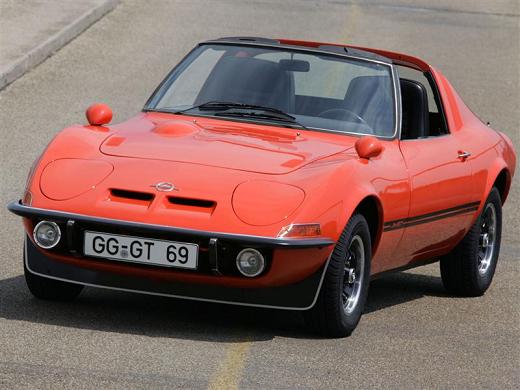
Opel GT
Therefore, in 1973, after only five years of production, the end was announced. By that time, exactly 103,463 cars had been manufactured, which is not a huge number compared to the competition, and today connoisseurs agree that Opel could comfortably keep the GT in production for a couple of years and fifty thousand more. Throughout its production, this model was also sold in the United States, where it went on to achieve remarkable success against expectations. At the time, Opel was being sold "over the ocean" through the Buick dealer network, so this was also the case with this model. That's where GT got the eternal nickname, "baby 'Vette" (Little Corvetta). An interesting fact is that most of the production was placed there, specifically, 70,222 vehicles.
In our country, too, this model was known, recognized and driven, albeit to a modest extent. Fortunately, about 15 copies of the GT have been preserved, and some of them are in excellent condition. In the world market of classic cars, the Opel GT is highly valued and is the subject of gatherings of many clubs. Due to many specific parts, the restoration is quite expensive, and the purchase price of a great vehicle, which sometimes reaches 20,000 euros. The opinion is that it is undoubtedly a lot of money, but that it was invested wisely…
Author: 426 Hemi
Pictures: Opel
Retrieved from: www.brzabrzina.com
Recommendation of similar texts:

Hi there, I am Mladen and I am an auto enthusiast. I started this blog years ago to help like minded people share information about latest cars, car servicing ideas, used car info, exotic cars, and auto technology. You will find helpful articles and videos on a wide variety of cars - Audi, Mercedes, Toyota, Porsche, Volvo, BMW and much more. Ping us if you have anything cool to share on latest cars or on how to make older cars more efficient, or just want to say hi!

